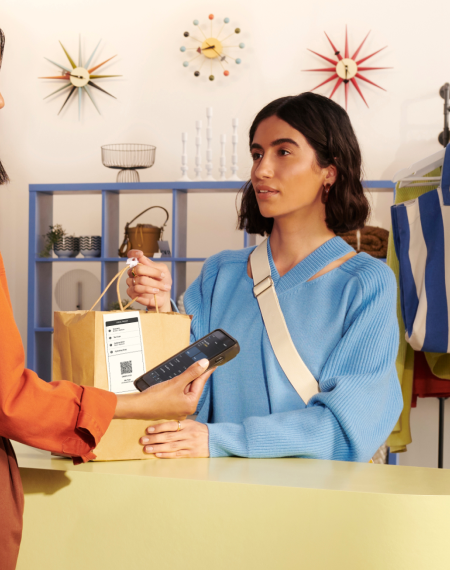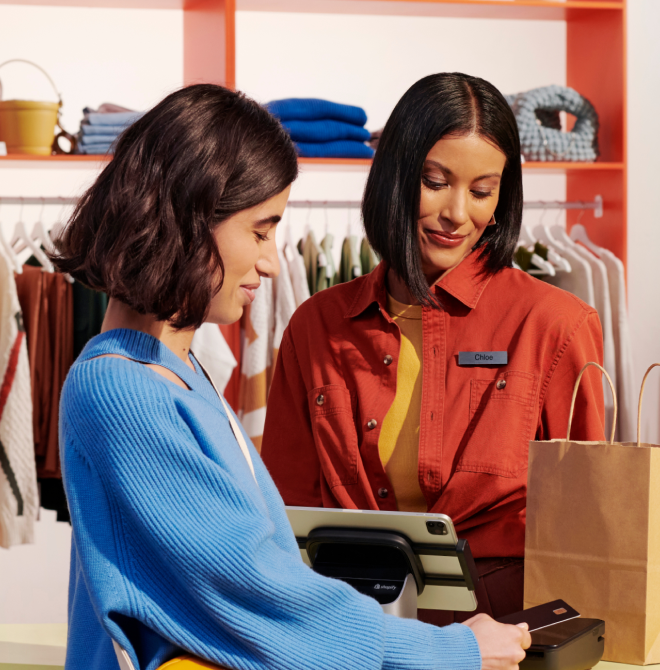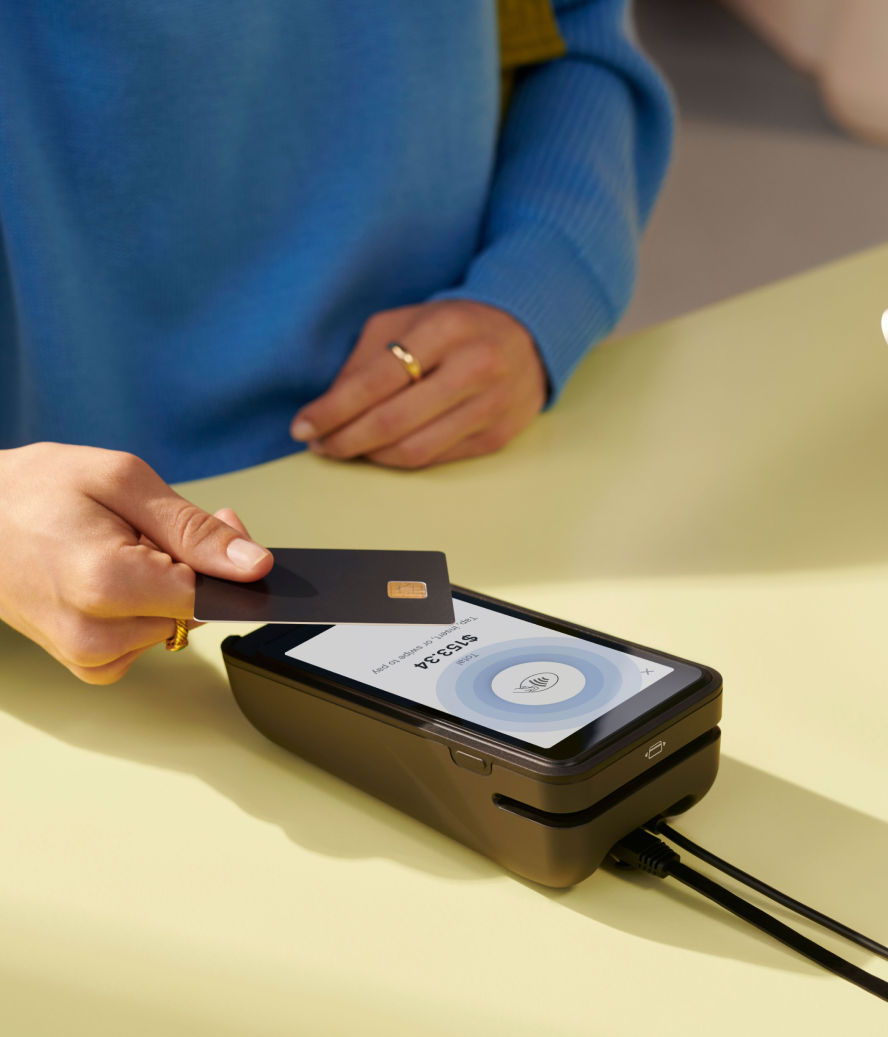The retail industry is at a technology crossroads. Some retailers continue to piece together disconnected systems and point solutions, while others are embracing unified commerce platforms that consolidate all retail operations into a single source of truth.
While maintaining separate systems might seem like the safe choice, research shows the opposite is true. According to a leading independent consulting firm, retailers who adopt unified commerce platforms—where POS and ecommerce share the same architecture and central data model—see significant improvements in operational efficiency, customer experience, and revenue growth.
As a leader in unified commerce, we keep a close eye on all retail technology trends. While Shopify focuses on providing a unified commerce foundation, many retailers also use complementary technologies to solve specific business needs.
From smart traffic analytics to IoT platforms, this guide explores the top retail solutions in 2025 that retailers are using to boost efficiency, reduce costs, and improve customer experience—starting with how a unified commerce foundation can maximize your technology investments.
Top smart retail solutions for 2025
1. Shopify
Today’s retailers need a platform that supports rapid, sustainable growth. Shopify delivers results through its unified commerce approach. By combining powerful features like endless aisles, clienteling tools, and built-in omnichannel selling, Shopify gives retailers the edge they need to scale their businesses.
Shopify isn’t just another retail platform—it’s the foundation for solving one of the industry’s biggest challenges: fragmentation.
As retailers struggle with siloed systems and disjointed customer experiences, Shopify offers a natively unified platform that connects ecommerce and physical retail. By consolidating operations, inventory, customer data, and sales channels, Shopify helps retailers stay organized and deliver consistent, personalized experiences across every touchpoint—and it’s proven to increase average annual gross merchandise value.
Shopify’s key features
One of the most impressive benefits customers see after adopting Shopify is a significant reduction in time spent on repetitive tasks. This time savings is driven by features like:
- Centralized order management: Shopify consolidates orders from all sales channels into a single dashboard, eliminating the need for manual coordination.
- Automated inventory tracking: Updates stock levels in real-time across both online and physical stores.
- Integrated POS system: Connects sales, inventory, and customer data across channels.
- Omnichannel fulfillment tools: Includes features like order routing and endless aisle, which streamline logistics by directing orders to the most efficient fulfillment location.
- Unified customer profiles: Route loyalty program participation, order history, email campaign engagement, and POS data to one unified customer profile to get a 360-view of your customers.
Jennifer Pearson, head of technology and ecommerce at Oak + Fort, highlights the real-world impact of these improvements: “One of our greatest areas of efficiency improvement is the management of omnichannel orders,” she says.
“We were able to cut down a three-step process to one action. This change has reduced ~50 hours/week in headquartered staff time, ~40 hours/week with customer experience teams, and ~10 hours/week from IT support. Across our 42 retail locations, we’re also saving ~80 hours/week of shop floor employee time.”
Beyond operational improvements, Shopify delivers other measurable results for retail businesses.
Shopify sets retailers up to thrive in the future
We know the retail industry (and the technology that supports it) innovates at lightning speed. This raises an important question: “How do you know if an investment in Shopify will stand the test of time?”
Shopify’s commitment to staying ahead of industry trends positions it as a future-ready solution. In 2023 alone, Shopify invested $1.7 billion in research and development, focusing on advancements that help its customers stay competitive.
This commitment to innovation is also matched by execution. Since 2021, Shopify has released 200+ platform updates and capabilities every year, consistently bringing first-to-market solutions that address the needs of modern retailers.
Shopify also provides a suite of native capabilities, pre-built integrations, and 10,000+ plug-and-play apps that allow retailers to customize their front- and back-end operations without requiring custom development. (For those who need deeper customization, Shopify offers flexible SDKs, APIs, and POS UI extensions to adapt the platform to meet unique business requirements.)
Retailers like Pepper Palace have seen Shopify’s impact firsthand. Corey Hnat, director of marketing, says: “In a period of rapid growth, the ability to set up and control a store’s POS system with a single click was a game-changer. It allowed us to open 60 new locations in a year.”
2. VionVision Smart Traffic Analytics
VionVision is a technology company specializing in advanced computer vision solutions for retailers. Founded in 2005, the company develops AI-powered smart sensors, edge-computing terminals, and comprehensive data analysis platforms. These tools give retailers real-time insights into customer behavior, store performance, and security.
VionVision transforms ordinary surveillance systems into intelligent tools that provide insights into customer behavior, traffic patterns, and potential security risks. It improves in-store operations with advanced analytics, helps retailers refine customer experiences, and reduces losses.
VionVision’s key features
- True flow traffic analysis: Excludes staff and removes repeated customer counts to provide accurate footfall data.
- In-store analytics: Tracks the time individuals spend in front of specific products.
- Loss prevention: Detects unusual behaviors, such as specific gestures or prolonged time spent in the checkout area, using advanced AI and computer vision.
- Smart sensors: Deliver precision and diverse data analysis capabilities to optimize management processes and support informed decision-making.
- Edge-computing terminals: Convert non-smart surveillance cameras into intelligent devices capable of simultaneously executing multiple video analysis tasks.
- Data and application platform (V-store platform): Generates comprehensive reports accessible from various devices.
- Remote surveillance: Manages video inspection, service quality improvement, environmental hygiene checks, and loss prevention in shopping malls, grocery retail, and other retail chains.
3. Samsung Connected Retail
Samsung's "Reconnecting Retail" initiative offers innovative digital retail solutions that create a more interactive, personalized, and efficient shopping experience. How? By integrating digital signage, mobile point-of-sale (mPOS) systems, beacon technology, and interactive displays into retail environments.
Samsung’s key features
- Digital signage: Uses daylight-readable LCD panels and direct-view LED displays to engage customers with dynamic content.
- Mobile point-of-sale (mPOS): Gives sales associates tablets to facilitate mobile transactions. mPOS systems also assist in inventory management.
- Beacon technology: Employs proximity beacons to recognize shoppers and notify sales associates.
- Interactive displays: Incorporates touch screens and interactive kiosks to give customers product information, availability information, and personalized recommendations.
- Data analytics: Collects and analyzes data from various touchpoints to give retailers insights into customer preferences.
4. Netguru IoT Integration Platform
Netguru offers comprehensive Internet of Things (IoT) services that connect physical devices, sensors, and machines to the Internet. This helps retailers collect and exchange data to improve the shopping experience for customers.
The IoT platform stands out for its ability to use real-time sensor data to predict and prevent stockouts. For example, shelf sensors can detect low inventory levels and automatically trigger restock alerts or orders. This makes it easier for retailers to run an efficient store.
Netguru's key features
- Shelf sensors: Detect low stock levels in real time and send alerts to the retailer’s system. Advanced sensors can even differentiate between product types and track replenishment speed to identify inefficiencies.
- Integrated inventory systems: Automatically trigger restock orders through platforms like Shopify or other inventory management tools.
- Predictive analytics: Analyze inventory trends to forecast demand, helping retailers prevent stockouts before they occur.
- Connected storage solutions: Link warehouse and store inventory systems to track stock movement from supply chain to shelf.
- Real-time reporting dashboards: Offer retailers a centralized view of inventory levels, restock needs, and sales trends. This allows for quick decision-making and better resource planning.
5. Sensormatic
Sensormatic Solutions provides advanced loss prevention and security technologies to help retailers protect merchandise and reduce shrinkage. Their solutions include electronic article surveillance (EAS) systems, smart tags, and traffic analytics, which all improve store performance and security.
Sensormatic’s key features
- Electronic Article Surveillance (EAS) systems: Use Acousto-Magnetic (AM), Radio Frequency (RF), and RFID technologies to detect unauthorized removal of items, effectively deterring theft and ORC.
- Smart tags: Employ advanced tagging solutions like the SuperTag 4 to protect high-value merchandise.
- Traffic analytics: Implement video solutions and computer vision analytics to monitor shopper behavior and traffic patterns.
Be ready for the future with Shopify
In the past few years, we’ve seen a wealth of ecommerce and retail software innovations. And while it seems challenging to keep up, here’s a secret: it’s not. That is, it’s not if you invest in the right tools.
Retail solutions like Shopify make it possible to adapt to change and drive growth that outpaces the competition. With Shopify’s unified platform, retailers don’t have to juggle fragmented solutions while trying to fill in the gaps. Instead, they can see all their customer data, inventory, and operations in one unified system.
Smart retail solutions FAQ
What is a smart retail system?
A smart retail system is a technology-driven platform integrating key retail functions into one unified solution. It combines tools like inventory management, point of sale (POS), customer relationship management (CRM), ecommerce, and analytics.
What does a retail solutions company do?
A retail solutions company provides technology and consulting services to help retailers improve operations, merchandising, and profitability. These companies offer smart retail technologies such as point-of-sale (POS) systems, inventory management software, CRM tools, and merchant analytics, which help reduce shrink loss and drive profit improvement.
How can smart retail solutions utilize sensor technology to improve the customer experience?
- Tracking foot traffic: Sensors monitor customer movement in stores, providing data that store supervisors and merchandisers use to optimize layouts and merchandising strategies.
- Personalized shopping: AI-powered retail sensors recognize loyal customers and trigger personalized offers, enhancing customer engagement.
- Inventory management: Sensors track stock levels, helping store teams prevent out-of-stock situations and reduce waste, which helps improve profits.
- Checkout efficiency: Technologies like RFID tags and smart carts automate checkout processes, saving labor and reducing wait times.





